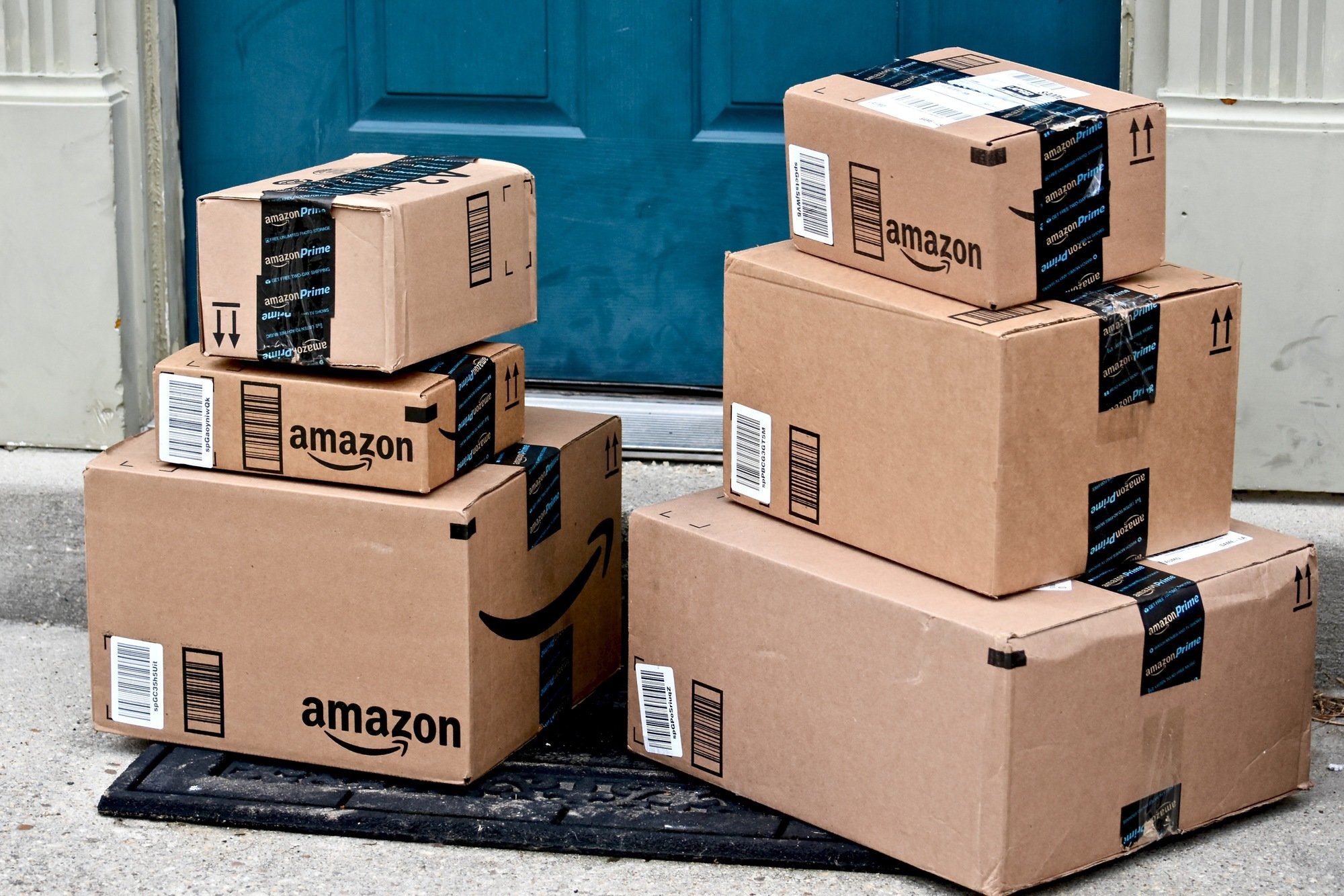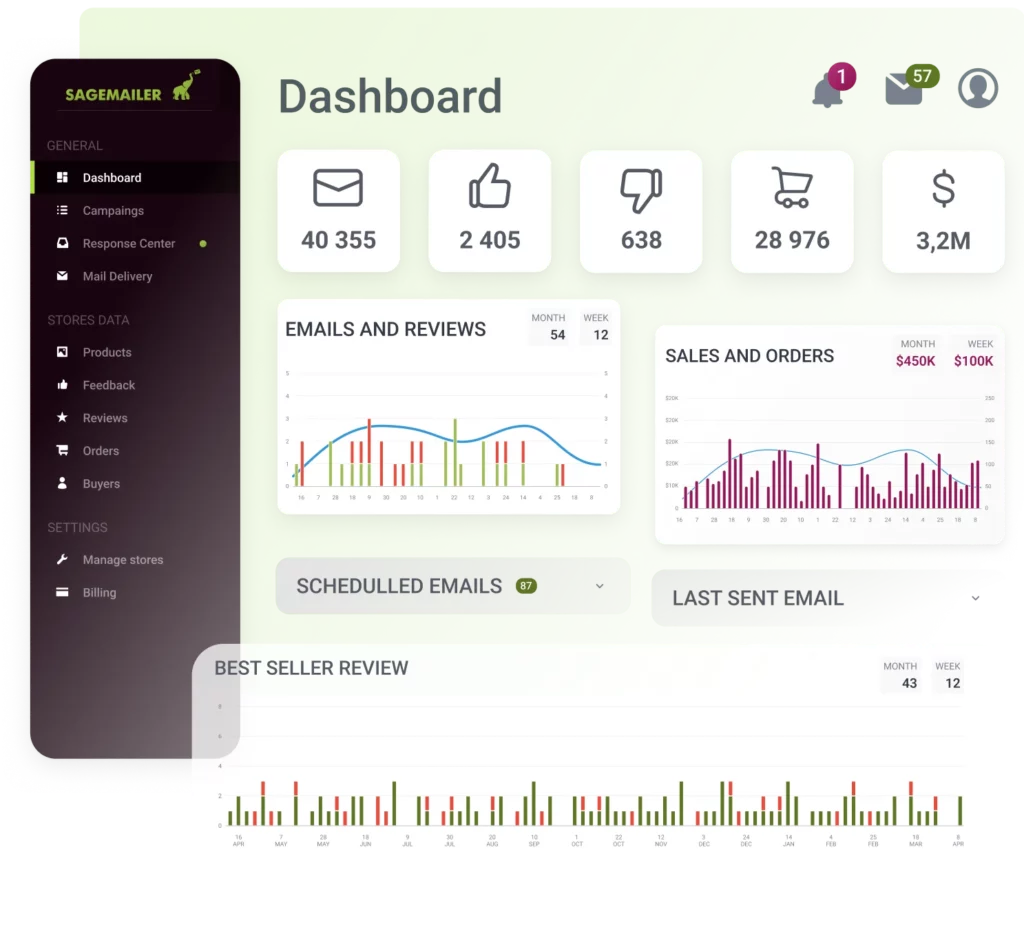Table of Contents
Are you an Amazon seller looking to boost your profits in 2023? If so, you’re in the right place! The world of e-commerce is constantly evolving, and one of the most lucrative strategies gaining traction in recent years is online arbitrage. Online arbitrage involves finding products at lower prices on one platform and reselling them at a profit on Amazon. Whether you’re a seasoned seller or just starting out, this post is your comprehensive guide to harnessing the power of online arbitrage to make money on Amazon like never before.
In the fast-paced world of e-commerce, staying ahead of the curve is essential, and online arbitrage can be your ticket to success. We’ll explore the latest trends and tools that can help you identify profitable arbitrage deals, navigate pricing fluctuations, and optimize your arbitrage business. Join us as we delve into the strategies, tips, and insights you need to thrive in the competitive landscape of Amazon selling.
Get ready to unlock the best arbitrage ideas and maximize your earnings with the exciting world of online arbitrage! Whether you’re a seasoned pro or just starting your Amazon journey, this guide will equip you with the knowledge and skills to make money with arbitrage.
Introduction to Online Arbitrage
Amazon is a prime destination for online arbitrage. This expansive marketplace offers an unparalleled variety of products, making it a treasure trove for arbitrageurs seeking profitable opportunities. With countless categories and niches to explore, sellers can easily diversify their inventory.
Also, Amazon boasts a massive customer base with millions of loyal shoppers who trust the platform for their online purchases. This built-in customer trust can significantly reduce the effort and cost required for marketing and customer acquisition.
Additionally, the Fulfillment by Amazon (FBA) program simplifies the logistics aspect of online arbitrage. Amazon takes care of warehousing, packing, and shipping, allowing sellers to focus on online arbitrage sourcing and scaling their businesses.
Online arbitrage is a dynamic and profitable strategy for Amazon sellers, offering excellent business opportunities for sellers.
What is online arbitrage?
Online arbitrage (OA) is an e-commerce business strategy that involves purchasing products from one online marketplace or retailer at a lower price and then reselling them for a profit on another online platform. Its essence is to exploit price differences between different online marketplaces or stores.
It’s a modern twist on the age-old concept of buying low and selling high, made possible by the vast array of online retailers and marketplaces available today.
Money arbitrage offers a way for e-commerce entrepreneurs to capitalize on market inefficiencies, take advantage of pricing fluctuations, and generate profits without the need to manufacture or create their own products. It’s a dynamic and competitive space, requiring careful research, effective sourcing strategies, and ongoing adaptation to market changes for success.
Retail arbitrage vs. online arbitrage involves physically visiting retail stores to find deals, offering immediacy but limited inventory options. In contrast, online arbitrage entails sourcing products from online platforms, providing a wider selection and scalability but lacking physical inspection.

Amazon OA seller
How does online arbitrage work?
OA starts with identifying products that are priced lower on one platform than they are on Amazon. Sellers leverage various tools and techniques to find these opportunities. Once a seller determines a profitable product, they purchase it and then list it for sale on Amazon, taking advantage of the price difference to make a profit. Key to this process is meticulous research, effective pricing strategies, and efficient inventory management.
Online arbitrage process
Product sourcing
Arbitrageurs search for lower-priced products on one online platform compared to their selling prices on another, typically higher-demand platform like Amazon. They use various tools, software, and techniques to identify arbitrage opportunities 2023.
Purchase
Once the arbitrageur finds a profitable product, they buy it from the source platform. That may involve purchasing single items or buying products in bulk, depending on the strategy and scale of the arbitrage business.
Resale
The purchased products are then listed for sale on the target platform, often at a higher price than what was paid on the source platform. Effective listing, pricing, and marketing strategies are crucial to attract customers and maximize profits.
Fulfillment
Depending on the business model, sellers may fulfill orders themselves or utilize services like Fulfillment by Amazon (FBA), where Amazon handles storage, packing, and shipping of products to customers.
Profit
The profit comes from the price difference between the purchase cost and the selling price minus any fees, shipping costs, and other expenses.
Pros and cons of online arbitrage
Arbitrage for Amazon FBA, like any business model, comes with its own set of advantages and disadvantages. While OA offers numerous benefits, it’s essential to approach it with careful research, effective pricing strategies, attention to detail, and the ability to adapt to market changes. Success in this field depends on your ability to find and exploit the best arbitrage opportunities in a competitive landscape. Here’s a breakdown of the pros and cons of OA.
Pros
Low barrier to entry: OA requires relatively low upfront capital compared to other e-commerce models like private labeling or manufacturing. You can start with a modest budget.
Diverse product selection: With countless retailers and marketplaces, you have access to a wide range of products, allowing you to diversify your inventory easily.
Reduced risk: Since you’re not manufacturing or creating products, the risk associated with product development production is less, and there’s minimum unsold inventory.
Quick turnaround: OA allows for faster turnaround times compared to many other e-commerce models. You can identify, purchase, and list products relatively quickly.
Scalability: As you gain experience and develop efficient sourcing and listing processes, you can scale your OA business easily.
Leverage Amazon’s customer base: By selling on Amazon, you tap into a massive customer base, reducing the need for extensive marketing efforts.
Fulfillment options: Amazon offers services like FBA, where they handle storage, packing, and shipping, saving you time and effort.
Data-driven insights: Amazon provides sellers with access to valuable sales data and analytics, helping them make informed decisions about product selection and pricing.
Cons
Intensive competition: The popularity of OA has led to increased competition, making it challenging to find profitable deals.
Price fluctuations: Online prices can fluctuate rapidly, affecting your profit margins. You must constantly monitor and adjust your pricing.
Quality control: You may encounter issues with product quality or authenticity when sourcing from various suppliers, which can lead to customer complaints and returns.
Market saturation: In some niches, OA markets may become saturated, making it harder to find profitable opportunities.
Amazon fees: Selling on Amazon comes with various fees, including referral fees and FBA fees, which can eat into your profits.
Inventory management: Managing inventory across multiple platforms can be complex and may require advanced tracking and forecasting.
Limited brand control: Since you’re selling existing products, you have limited control over branding and product customization.
Risk of suspension: Violating Amazon’s policies or selling inauthentic or prohibited items can result in account suspension.

Amazon orders
Getting Started with Online Arbitrage
Getting started with online arbitrage for beginners involves several key steps, from setting up your business to sourcing products and making profitable listings. Additionally, there are several tools available to assist you in your OA journey. Here’s a step-by-step guide on how to get started and the tools that can help:
Steps to getting started with online arbitrage
Step 1. Establish your business
- Register your business entity if required in your region;
- Set up a bank account dedicated to your arbitrage business;
- Familiarize yourself with tax obligations and requirements for online sellers.
Step 2. Create seller account
- Create a Seller Central account for Amazon; select a professional account if you plan to sell more than 40 products monthly;
- Sign up for Fulfillment by Amazon (FBA) if you plan to use their services.
Step 3. Research and education
- Study the OA process thoroughly through books, online courses, or tutorials;
- Understand the legal and ethical aspects of arbitrage, including pricing and reselling.
Step 4. Find profitable products
- Use product research tools to identify products with potential for profit. Tools like Tactical Arbitrage, OAXray, or Keepa can assist in scanning and analyzing product listings;
- Consider factors like sales rank, historical price data, and competition when evaluating products.
Step 5. Source products
- Locate reliable sources for products, such as online retailers, clearance sales, or discount stores;
- Purchase products at a price that allows for a reasonable profit margin after fees and shipping costs.
Step 6. List your products
- Add your products to existing listings on your chosen Amazon marketplace(s);
- Use competitive pricing strategies to attract buyers.
Step 7. Manage inventory
- Implement inventory management tools or spreadsheets to keep track of your stock levels and sales;
- Track and monitor inventory levels.
Step 8. Fulfillment and shipping
- Decide whether you will fulfill orders yourself or utilize services like FBA;
- If using FBA, package and ship your products to Amazon’s fulfillment centers.
Step 9. Monitor and adjust
- Continuously monitor the performance of your listings and adjust prices or strategies as needed;
- Stay updated on market trends and competitor actions.
Step 10. Customer service
- Provide excellent customer service, addressing inquiries and handling any issues promptly;
- Use customer communication tools like SageMailer for effective customer communication.

SageMailer Dashboard
Tools to help sellers get started
Product research tools
Tactical Arbitrage, OAXray, Keepa, CamelCamelCamel, and Seller Assistant App help you identify profitable products by analyzing historical price data and sales rank.
Inventory management software
Tools like Inventory Lab or SellerEngine Plus assist in tracking inventory, calculating profits, and managing expenses.
Repricing and price tracking software
Repricing tools like Repricer can automatically adjust your prices to stay competitive. Tools like PriceBlink or Honey can alert you to price drops and deals while you shop online.
Profit calculators
Profit calculators such as the Amazon FBA Calculator help you estimate potential profits and fees.
Customer communication tools
Tools for communication with customers like SageMailer automate and optimize customer communication and increase buyer satisfaction. SageMailer offers a range of features: Review & Feedback Alerts, Detailed Campaign Analytics, Powerful Amazon Review Emails, A/B Testing, and a Response Center.
Ready to optimize your customer communication and drive positive reviews? Try for free SageMailer and take advantage of these powerful features. Sign up to get started today!
Accounting software
Accounting software like QuickBooks or Xero helps manage finances and track profits and expenses.
Keyword research tools
Tools like MerchantWords or Helium 10 assist in optimizing product listings for search rankings.
Analyzing and Sourcing Products for Reselling
Reselling products through OA on Amazon can be a lucrative venture if you know how to analyze and source the right products. Mastering the art of analyzing and sourcing products is critical to success in online arbitrage. By carefully selecting products, analyzing their potential profitability, and knowing where to source them, you can build a thriving reselling business on Amazon.
Types of products to resell on Amazon
Everyday essentials: Items like toiletries, cleaning supplies, and pantry staples are often in high demand and can provide a steady stream of sales.
Electronics: Gadgets, accessories, and tech products with a reliable sales history and competitive pricing can be profitable choices.
Apparel and accessories: Clothing, shoes, and fashion accessories can yield good profits, especially when you find trendy or branded items at a discount.
Toys and games: Children’s toys, board games, and collectibles often have strong demand, especially during the holiday season.
Home and kitchen appliances: Look for kitchen gadgets, home improvement tools, and appliances that offer value to buyers.
Books and media: New and used books, DVDs, and video games can be profitable when sourced correctly.
Health and wellness: Vitamins, supplements, and health products with consistent demand can be lucrative.
Seasonal and niche items: Holiday-themed products, seasonal decorations, and niche items with a dedicated customer base can provide excellent opportunities.
How to Analyze products for reselling on Amazon
Sales Rank: Consider products with a reasonable sales rank in their category. Lower sales ranks generally indicate higher demand.
Historical price data: Use tools like Keepa or CamelCamelCamel to analyze price history and identify trends.
Profit margin: Calculate potential profit by subtracting all fees, including Amazon fees and shipping costs, from the selling price.
Competition: Assess the number of sellers and their pricing strategies. High competition may lead to price wars and reduced profits.
Reviews and ratings: Products with positive reviews and ratings tend to perform better on Amazon.
Seasonality: Be mindful of the seasonality of products; some items may have higher demand during specific times of the year.
Return on Investment (ROI): Ensure that your investment in a product will yield a reasonable return in a reasonable timeframe.
Where to source online arbitrage products
Online retailers: Major retailers’ websites often offer deals and discounts that sellers can exploit for arbitrage. Consider sites like Walmart, Target, Best Buy, and more.
Marketplace deals: Some products are listed at lower prices by third-party sellers on marketplaces like eBay or Etsy.
Clearance and discount stores: Physical stores like TJ Maxx, Ross, or dollar stores often have discounted items that can be profitable online.
Liquidation auctions: Liquidation auction websites can provide access to surplus or returned merchandise at lower prices.
Wholesalers and distributors: Establish relationships with wholesalers who can offer you products at bulk rates.
OA tools: Tools like Tactical Arbitrage or FBA Wizard can help you identify deals and profitable products online.
Local sales and classifieds: Look for local sales, garage sales, or classified ads for potential product sourcing opportunities.
The Process of Online Arbitrage
Online arbitrage involves a number of steps, from product research to purchasing products at a lower price to resell them on Amazon. By following these steps and conducting thorough research, you can identify profitable products, list them on Amazon, and calculate their profitability effectively. Consistency, careful analysis, and adaptation to market trends are key to success in the world of online arbitrage.
Step-by-step Guide to Selling Online Arbitrage Items on Amazon
Step 1. Product research
Utilize product research tools like Tactical Arbitrage, Keepa, or Jungle Scout to identify potentially profitable products on online retail websites.
Step 2. Analyze profitability
Examine the product’s sales rank, historical price data, reviews, and competition to assess its potential for profit;
Calculate the estimated profit margin by subtracting Amazon fees, shipping costs, and the purchase price from the expected selling price on Amazon.
Step 3. Purchase products
Buy the selected products from the online retailer or marketplace where you found the deal. Ensure you follow their terms and conditions.
Step 4. List products on Amazon:
Add the offers for your purchased products to the existing listings on Amazon Seller Central;
Provide competitive pricing.
Step 5. Fulfillment
Choose whether to fulfill orders yourself (Merchant Fulfilled) or utilize Amazon’s FBA service;
If using FBA, prepare and ship your products to Amazon’s fulfillment centers.
Step 6. Monitor listings
Continuously monitor your product listings, adjusting prices and strategies as necessary to remain competitive.
Step 7. Customer service
Provide excellent customer service, responding promptly to inquiries and addressing any issues.
Example of finding a profitable product using online arbitrage
Suppose you use a product research tool and discover a popular brand of headphones on a retail website priced at $50, significantly lower than its usual Amazon price of $80. After accounting for shipping and Amazon fees, you estimate your total cost per unit to be $60, leaving you with a $20 profit margin per sale if you sell the headphones for $80 on Amazon. That is a promising arbitrage opportunity.
Calculating the profitability of online arbitrage products
To calculate the profitability of OA products, consider the following formula:

Calculating the profitability of online arbitrage products
In the example above:
- Selling Price on Amazon: $80
- Cost per Unit (including purchase, shipping, and Amazon fees): $60
Using the formula:
Profit Margin = (($80 – $60) / $80) x 100 = ( $20 / $80) x 100 = 25%
This means you have a 25% profit margin on each sale of the headphones, which is a healthy margin for an online arbitrage product.
Automating Online Arbitrage Sourcing
As OA continues to gain popularity, the need for efficient and scalable sourcing methods has led to the development of automation tools and strategies. Automating OA sourcing through virtual assistants, specialized tools like Source Mogul, or comprehensive solutions like Tactical Arbitrage can significantly enhance your ability to identify profitable deals and scale your arbitrage business efficiently. These automation methods allow you to focus your efforts on strategic decision-making and growing your Amazon business.
Using online lead lists sourced by a virtual assistant
One effective way to automate online arbitrage sourcing is by delegating the task to a virtual assistant (VA). VAs can scour the internet for deals based on your criteria and create lead lists of potential products. This method allows you to leverage a VA’s skills and expertise to automate the initial product discovery process, saving you time and effort.
Using VAs
Set criteria: Define specific criteria for the types of products you want to source, such as price range, sales rank, and category.
Hire a VA: Find and hire a reliable virtual assistant who can perform online research and data entry tasks.
VA research: Provide your VA with access to online marketplaces, deal websites, and clearance sections of retail sites. Instruct them to compile a list of products that meet your criteria.
Review and purchase: Regularly review the leads lists created by your VA and purchase the products that meet your profitability standards.
Using Source Mogul to automate finding online deals
Source Mogul is a tool designed specifically for deal sourcing. It automates the process of finding deals and can significantly enhance your sourcing efficiency. Source Mogul streamlines the process by automating deal discovery, reducing the time and effort required to source products manually.
Using Source Mogul
Set filters: Configure Source Mogul with your specific criteria, including minimum profit margin, sales rank, and desired categories.
Integration: Link Source Mogul with your Amazon Seller Central account and other marketplaces you use for arbitrage.
Automatic scanning: Source Mogul continuously scans multiple online retailers and marketplaces for products that match your criteria.
Alerts: When it identifies a profitable deal, Source Mogul sends you alerts via email or SMS, including details about the product and the retailer.
Purchase: Review the alerts, and if a deal meets your criteria, you can quickly purchase the products directly from the retailer.
Using Tactical Arbitrage to Automate Finding Online Arbitrage Deals
Tactical Arbitrage is another powerful tool that automates the process of finding online arbitrage deals across multiple online retailers. Tactical Arbitrage simplifies the process of finding profitable products by automating the search and analysis, saving you time and increasing the efficiency of your online arbitrage business.
Using Tactical Arbitrage
Set filters: Define your sourcing criteria, including desired categories, minimum profit margin, and sales rank.
Select retailers: Tactical Arbitrage allows you to choose from a wide range of supported online retailers and marketplaces.
Scan retailers: The tool scans the selected retailers’ websites for products that match your criteria.
Results and analysis: Tactical Arbitrage provides you with a list of potential deals, including estimated profitability and other relevant data.
Purchase: Review the results and decide which products to purchase directly from the respective online retailers.
Increasing Profit Margin in Online Arbitrage
In the competitive world of online arbitrage, finding ways to boost your profit margin is crucial for success. Here are two effective strategies to increase your profit margin when engaging in online arbitrage:
Using coupon codes to lower item prices
Coupon codes are valuable tools that can help you lower the purchase price of items when sourcing products for online arbitrage. Incorporating coupon codes and cashback sites into your online arbitrage sourcing strategy can be a smart way to increase your profit margins while keeping costs down, ultimately contributing to the success and sustainability of your e-commerce business. By effectively leveraging coupon codes, you can lower your cost of goods and increase your overall profit margin in online arbitrage.
Using coupon codes
Identify coupon sources: Start by exploring various coupon websites, forums, or even retailer newsletters. Many online retailers offer discounts through promotional codes that sellers can apply during the checkout process.
Combine with sales: Look for coupon codes that you can use in conjunction with existing sales or promotions. This combination can lead to substantial discounts on the purchase price.
Track expiration dates: Pay attention to the expiration dates of coupons. Timing your purchases to coincide with coupon availability can maximize your savings.
Stacking coupons: Some retailers allow you to stack multiple coupons for a single purchase. That can lead to significant price reductions.
Bulk purchases: Consider buying products in bulk when using coupons, as this can result in more substantial savings and increased profit margins.
Using cashback sites to earn rebates when shopping online
Cashback sites offer a fantastic opportunity to earn rebates on your online purchases, further increasing your profit margins. Using cashback sites can lead to significant savings over time, enhancing your profitability. Be sure to check the terms and conditions of each cashback offer, as some restrictions may apply, such as minimum purchase requirements or specific product categories eligible for cashback.
Using cashback sites
Choose reputable cashback sites: Start by selecting well-established and reputable cashback websites. Popular options include Rakuten (formerly Ebates), TopCashback, and Swagbucks.
Create an account: Sign up for an account on your chosen cashback site. That is typically a straightforward process that requires minimal personal information.
Activate cashback: Before making a purchase, log in to your cashback account and activate the cashback offer for the specific retailer you plan to buy from.
Shop as usual: Proceed to the retailer’s website through the cashback site’s referral link. Shop for the products you intend to purchase as you usually would.
Earn rebates: After completing your purchase, the cashback site will track your transaction and credit your account with a percentage of the purchase amount as a rebate.
Withdraw earnings: Once you accumulate a certain amount of cashback, you can withdraw your earnings as cash, gift cards, or other rewards.
Conclusion
In conclusion, the realm of online arbitrage on Amazon continues to offer boundless opportunities for entrepreneurial spirits and seasoned sellers alike. The strategies and techniques we’ve explored in this post are your keys to success in this ever-evolving e-commerce landscape.
Whether you’re utilizing cutting-edge automation tools to streamline your sourcing process, leveraging coupon codes and cashback sites to boost your profit margins, or continuously refining your product selection, one thing remains certain: online arbitrage is a dynamic and lucrative path to explore in the world of Amazon selling.
As you embark on your sales journey, remember that dedication, adaptability, and a keen eye for profitable opportunities will be your greatest assets. Stay informed, keep optimizing your strategies, and remain customer-focused in your approach. With the right mindset and a commitment to excellence, your Amazon business can flourish, bringing you the financial rewards and entrepreneurial satisfaction you aspire to achieve.


